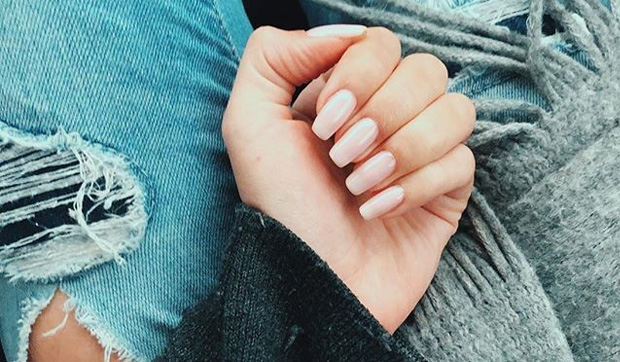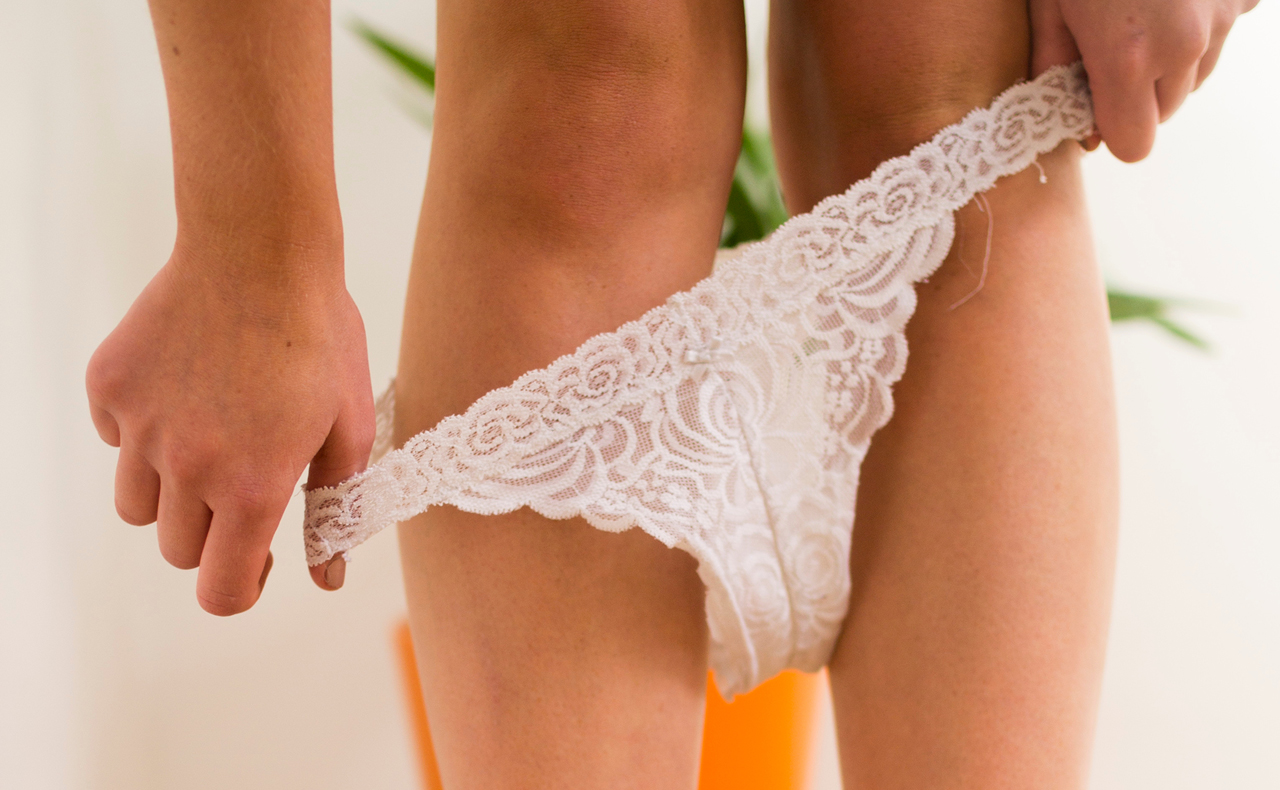Many of us take care of our nails at home, but have you ever wondered whether you’re doing it right? You’re probably thinking, “It’s nails, how hard can it be?”, but there’s actually a lot to know when it comes to trimming, buffing, cuticle care… and that’s all before you even think about painting!
Luckily, there are professionals out there who DO know and are willing to share their expert tips so you can be at the top of your DIY mani game. Get ready for better nails…
RELATED: 7 nail shapes to know for your next manicure
RELATED: 5 common nail problems and how to fix them
TRIMMING
There are two main tools for trimming nails: scissors and clippers. So which one should you be using? CND Education Ambassador Cherie Pollard prefers clippers, saying they’re “a better tool for trimming as they don’t flatten out the nail”. However if your nails are weak or you’re cutting a child’s nails, Sally Hansen Nail Expert Alison Bowhill-Hayes says scissors are the better option.
As for the trimming length, this comes down to personal preference. The only thing to be careful of is not going too short. “You should always leave a slight bit of the white tip, even if your preference is for short nails,“ says Alison. “There is delicate pink skin under the nail tip called the hyponychium and if it gets exposed from short cutting you will have [an increased] risk of infection and peeling oranges/onions etc. [which] will be very painful.”
And the downside to long nails is they’re more prone to bending and breaking – so keeping them just a few millimetres longer than the tip of your finger is ideal for growing strong, healthy nails.
FILING
It’s often assumed (or even just an automatic brain function) to file nails using a back and forth action, however CND Education Ambassador Danelle Barr says DIY filers should file the nail in the natural direction of its growth. Aka from the edges up towards the centre in one direction, alternating sides. Alison agrees, saying that filing in one direction will prevent any accidental tearing, “[although] if the file is super smooth it won’t matter which way you go”. For weak and splitting nails, both experts recommend using a file no lower than a 240 grit. And Cherie says to “cut as smoothly as possible”, so little filing is required.
As for the shape to file your nails into, Alison recommends ‘squoval’ (a square trim that’s filed round at the sides) to protect nails from splitting at the side walls and help them grow stronger. She also says to “never file damp or wet nails as they will fray”.
bh recommends:

- QVS Nail Clippers
- UBU Nail Scissors with curved blades
- Sally Hansen Nail Shaper
- CND Creative Nail Design Glossing Buffer Block
BUFFING
Similar to filing, the best way to buff your nails is again in the direction of their growth, working from the cuticle to the free edge in a vertical upward movement.
If you’re using a four-way buffer, Alison says, “Start by filing the free edge, then buff using the side with a gentle grit. Finally choose the ‘chammie’ (usually the white or smoothest side of the buffer) and use in circular movements [to] shine up the entire nail plate.”
If your nails get hot, it means you’re buffing too hard or for too long. “If you feel heat it is because you have created friction burn,” says Cherie. “Keep your movements rounded like the surface of your nail and keep it moving.”
You also don’t need to buff your nails every manicure either. Alison says once a month is enough, while Cherie believes you can stretch it to even three months depending on your nail growth. She says, “If you buff consistently, you will most likely over-buff your nails, thinning them unnecessarily.”
CUTICLE CARE
Looking after your cuticles is an important part of your nail routine and shouldn’t be forgotten, as damaged cuticles can look red, tight and irritated, to dry and chalky.
To avoid the latter, make sure you’re applying a cuticle oil frequently. “Once a day is good, twice a day is better,” says Cherie. “Application should be before bed or when you won’t be washing it off straight away.” Alison even recommends to massage the cuticles as you apply the oil, to stimulate blood flow for healthier skin.
But one thing many experts agree to avoid doing at home is cuticle trimming. Danelle says, “Trimming cuticles should be performed by professionals, as clients performing this themselves could easily damage and tear living tissue which can lead to infection.”
Cherie agrees, saying that in most circumstances cuticle trimming is unnecessary. “Treat the area rather than cut it,” she says. “Start with cuticle exfoliation and follow with a conditioning treatment.”
As for pushing back your own cuticles, this is actually fine to do yourself. Danelle says, “The best way is to apply a small amount of CND CuticleAway™ and gently slide a cuticle pusher along the nail plate towards the cuticle area and along the lateral fold, to lift and loosen any non-living tissue from the nail plate.” Pushing back your cuticles will help keep them looking soft and prevent old cuticles growing up the nail.
bh recommends:

- Mavala Switzerland Cuticle Sticks
- Burt’s Bees Lemon Butter Cuticle Cream
- Fabuluscious Nail & Cuticle Duo Pack
- OPI Avoplex Cuticle Oil To Go
- Nutrimetics Ultra Care+ Vitamin Oil
PAINTING
It may sound simple, but the key to perfectly painted nails is to take your time. Alison advises, “Don’t do a rushed job or take shortcuts. Trim, file, buff, clean the nail, apply a base coat, followed by two coats of colour and seal with [a] top coat.” When painting, Danelle says the best technique is “applying a thin layer first and covering the nail in three strokes with the brush”.
Cherie agrees, saying, “Your first coat will not be opaque, it should just provide colour from side to side. The second coat evens out the colour and provides depth of colour.” All three experts agree that two coats of polish will provide the best results.
If you don’t like waiting for your nails to dry, Alison says to avoid applying your coats too thick and make sure your polishes are in good condition. “Any signs of glugginess [means] they need to be replaced.” And if you really want to speed up the drying time, she says using a product like Sally Hansen Salon Manicure Dry & Go Drops is your best bet.
And if you’ve ever wondered whether you need to give your nails a break from polish…
Cherie believes it’s best to have something on your nails at all times, even if it’s just a clear base or top coat to keep moisture locked into your nails. But if you’re a fan of dark and opaque colours, Alison says giving your nails a break every now and then is a good idea to avoid nail discolouration.
Is your nail care routine mostly DIY? Did you learn any tips you didn’t already know?









I like to keep mine short.